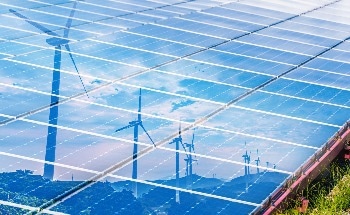Key Takeaways
- A study from the National Renewable Energy Laboratory estimates U.S. federal reservoirs could generate up to 1,476 terawatt-hours of energy annually with floating solar panels.
- The researchers recognize that while the full potential is vast, even utilizing 10% could significantly contribute to the nation’s energy needs.
- Future research will focus on specific reservoirs’ suitability for floating solar installations, considering ecological impacts and regulatory compliance.
Exploring Floating Solar Energy Potential
A recent study published in Solar Energy examined the untapped potential of floating solar panel installations on federally owned or regulated reservoirs in the U.S. Conducted by researchers Evan Rosenlieb and Marie Rivers, along with analyst Aaron Levine from the National Renewable Energy Laboratory (NREL), the study provides a comprehensive analysis of how floating solar technology may bolster the nation’s energy production.
The team found that federal reservoirs could support floating solar panels capable of generating up to 1,476 terawatt-hours of electricity annually, which is enough to supply energy to nearly 100 million households. This figure reflects the technical potential based on fully utilizing all suitable reservoir space for solar technology.
According to Rosenlieb, “We know we are not going to be able to develop all of this. But even if you could develop 10% of what we identified, that would go a long way.” This indicates a significant opportunity for partial development that could advance the U.S. toward its renewable energy goals.
While the study highlights the potential benefits of floating solar energy, it also acknowledges necessary further research concerning the human and wildlife impacts that may arise from such installations. This area of inquiry will be crucial for assessing the viability of projects on specific reservoirs in future studies.
Floating solar panels offer distinct advantages: they utilize water surfaces without competing for land, reduce evaporation by shading water bodies, and thereby preserve vital water resources. However, large-scale floating solar projects are still in their infancy in the U.S., with no installations exceeding 10 megawatts.
Levine notes that earlier studies have addressed the potential of floating solar in the U.S., but this is the first to identify the best water sources for such technology. There are challenges to consider; for instance, shipping traffic can create wakes that might damage infrastructure, while certain reservoirs may have conditions unsuitable for floating solar, such as being too cold, shallow, or having steep sides.
Despite these challenges, some reservoirs used for hydropower generation may be ideal candidates for floating solar plants. A synergistic energy system combining solar and hydropower could provide more consistent energy to the grid. If a drought impacts a hydropower facility, solar panels could supplement energy production until water levels recover.
In addition, developers are exploring new reservoirs for pumped storage hydropower. These are not currently utilized for recreation, habitat, or food production, making them prime candidates for combined energy generation.
Future research will aim to identify sites that are in proximity to transmission lines and power demand, evaluate development costs, and consider environmental impacts. The study also intends to explore not just federal reservoirs, but smaller reservoirs, estuaries, and ocean locations for potential floating solar installations.
This initiative was funded by the U.S. Department of Energy’s Office of Energy Efficiency and Renewable Energy through its Water Power Technologies Office and Solar Energy Technologies Office.
The content above is a summary. For more details, see the source article.















